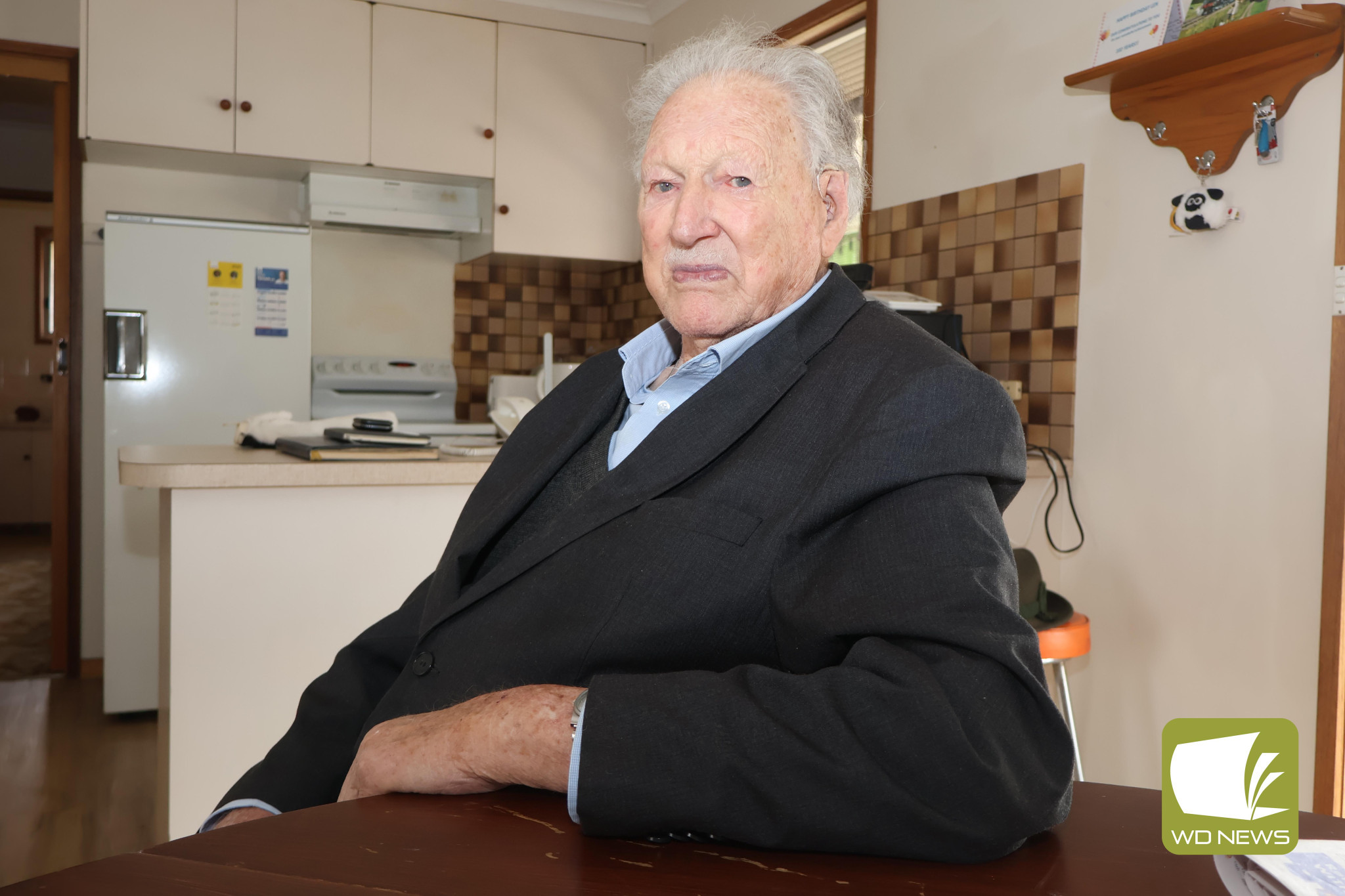Community
26 June, 2025
Pomeroy brother honoured 80 years after death
TERANG World War II veteran Herbert ‘Jack’ Pomeroy has been honoured 80 years after his death in Australia’s largest army training incident.

Wagga Wagga City Council held a special ceremony on May 21 to commemorate the 80th anniversary of the Kapooka Tragedy – the worst military training accident in the nation’s history, which claimed the lives of 26 Australian soldiers.
A new commemorative plaque was unveiled on the anniversary, in addition to new street signs re-naming roads in memory of those who perished.
The first road to be renamed was Merino Road, which has now become Pomeroy Drive in honour of First Engineer Training Battalion Acting Sergeant Jack Pomeroy – one of two instructors who died in the disaster.
The circumstances surrounding the Kapooka Tragedy remain largely mysterious to this day.
The incident occurred during a live explosives training exercise.
The younger brother of Jack, Len Pomeroy, is now 102-years-old and vividly recalls his frustrations with understanding how the incident came to occur.
Len Pomeroy was himself a sapper in the Australian Army during WW2, and still questions how it came to be that 26 lives were lost in a matter of moments.
“It’s a terribly unfortunate thing that happened,” he said.
“There was a lot of mistakes made that day, I think – not by the people in the pit but by the bloody authorities.”
Mr Pomeroy said, from the details he could gather, a series of systemic failures had been the catalyst for what he suspects was a simple mistake leading to disastrous results.
“One of the instructors wasn’t there and they doubled up the number of men in the dugout than they should have had,” he said.
“The detonators shouldn’t have been in the same dugout as the explosives because they’re shockingly dreadful things – you hold them and the pulse in your thumb can set the things off.
“For some reason or another, they must have had hundreds of pounds of explosives and the detonators in there.
“Everything went bloody wrong that day – everything that shouldn’t have been done, was done.”
The sole survivor of the incident, Sapper Allan Bartell, was seated in a back row and did not see what caused the incident.
“It had to be a detonator which set it off – whether they were fitting detonators into lengths of fuse cord, and I would guess someone dropped one of them and it set the whole thing off,” Mr Pomeroy said.
“That’s the only explanation.
“But this is government bureaucracy – they bypass a lot of what safety regulations were in place.
“It shouldn’t have happened, but it happened – I think, during a war, some of the rules went straight out the doorway.”
Mr Pomeroy fondly remembers his older brother as being, simply, quite nice.
“He wasn’t the most boisterous of the bunch – my oldest brother was all bull and buff but Jack as the second oldest was a nice, pleasant sort of chap,” he said.
“He wasn’t the aggressive sort, but he was a great sportsperson.
“He loved his cycling and won a lot of classic races in Ballarat and Ararat – he won road races in Geelong and Melbourne.”
Jack had been among the six Pomeroy siblings raised by their widowed mothers after she had immigrated to Australia.
“He worked around the district before he went to Melbourne, but as soon as the war came he enlisted,” Mr Pomeroy said.
“He went and served in the Middle East and in Greece but, when the Japanese entered WW2, Australia brought the troops back and Jack was sent to Papua New Guinea against the Japanese.
“He did a term there but was promoted to Sargeant – because you learn in the field, he was returned to Australia because they wanted more specialists to become an instructor.
“He was handing explosives, dynamite and detonators – anything to do with explosives, he was an expert.”
The Kapooka Tragedy made national and international headlines, heightened by the timing of the incident.
Germany had surrendered 13 days prior, and the Allies were well positioned in the Pacific as optimism grew for the prospect of approaching peace.
An estimated crowd of 7000 lined the streets three days after the explosion as Australians payed their respects to those who had died.
At the 80th anniversary commemorative event, Royal Australian Engineers Head of Corps Brigadier Mick Say lamented the extraordinary loss of life.
“The loss of 26 sappers during the Kapooka tragedy remains to this date the Australian Army’s largest loss of life in training and had a significant impact on the Corps of the Royal Australian Engineers,” he said.
“This tribute to honour the fallen sappers is a fitting way to remember their sacrifice and demonstrates the strong and long-standing connection between the Corps, Army and wider Australian Defence Force community with the city of Wagga Wagga.”
Read More: Terang